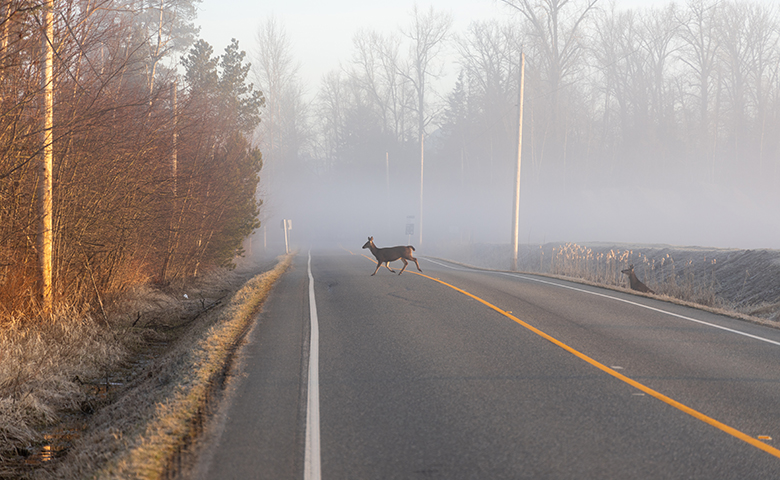If you’re a hunter—or you know someone who is—you likely know the importance of 24/7 safety in November.
But it’s also a time when people like to enjoy outdoor activities in the crisp air before the full-on winter weather arrives. For some, this includes scenic walks, hikes or drives to take in any remaining fall foliage, and special attention should be paid to human factors during this time.
Scenic walks or hikes
Because it’s hunting season, keeping your eyes and mind on task is very important when you’re “out in the wild.” The first thing you’ll want to do is choose the location of your walk/hike wisely. You may want to stick to established trails as hunters often avoid areas with heavy foot traffic. Timing is another thing to keep in mind when you venture out—try to avoid peak hunting times like early mornings and evenings on weekends when hunters are most active.
But even with the best-laid plans, you don’t want to become complacent about the risks of walking or hiking during hunting season because there may be inexperienced hunters who don’t take the same consideration that seasoned hunters do. Take extra precautions with your wardrobe and wear high-visibility clothing when walking or hiking near where people hunt. But clothing may not be sufficient on its own; it’s important to also make noise to ensure you’re not mistaken for game—some people affix bells to their clothes while others carry a whistle. It’s also important during this time to keep pets on a leash to avoid them accidentally running into the line of fire of a hunter (it’s not a bad idea to dress them in an orange vest or scarf too).
Driving
It’s unofficially “watch for wildlife” season. As a rule of thumb, when you’re driving, you should always be scanning the side of the road for wildlife, and this is particularly true in November when it’s peak time for deer to be traveling—especially at dusk and dawn.
When driving, it’s important to be aware of your state—fatigue and complacency can lead to drivers missing important cues during “watch for wildlife” season. Yellow wildlife warning signs are a great trigger to pay more attention as they indicate an increased risk of wildlife in those areas. Use high beams when possible to look for yellow eyes as you drive. And remember that deer and moose often travel in groups, so if you see one, expect more. That close call of missing the large animal can quickly become a collision with the animals that follow.
If you suspect there may be wildlife beside the road you’re traveling on, slow down and pass carefully. And follow these tips to stay safe this November:
- Flashing your headlights will sometimes frighten a deer away from the road, but it can also cause them to freeze in their path. If you catch a deer in your headlights or one comes into your path, honk your horn.
- If a deer enters your path, it’s usually more dangerous to try to swerve to avoid it. Instead, brake firmly and try to keep the wheel straight.
- Keep other drivers in mind. Turn on your emergency flashers and tap your brakes to alert other drivers to potential danger ahead to alert them to slow down.
- It is dangerous to approach an injured deer—if you hit a deer, report the incident to local authorities instead.
Remember that scene from the ’90s movie Tommy Boy? Watch this clip—It humorously demonstrates what you really shouldn’t do if you hit a deer.
There are also a number of hunting safety tips that those who take part in hunting need to follow. SafeTalk with SafeStart Season 9, Episode 1 SafeStart Goes Deer Hunting talks about hunting safety and provides a PDF handout to accompany it.

